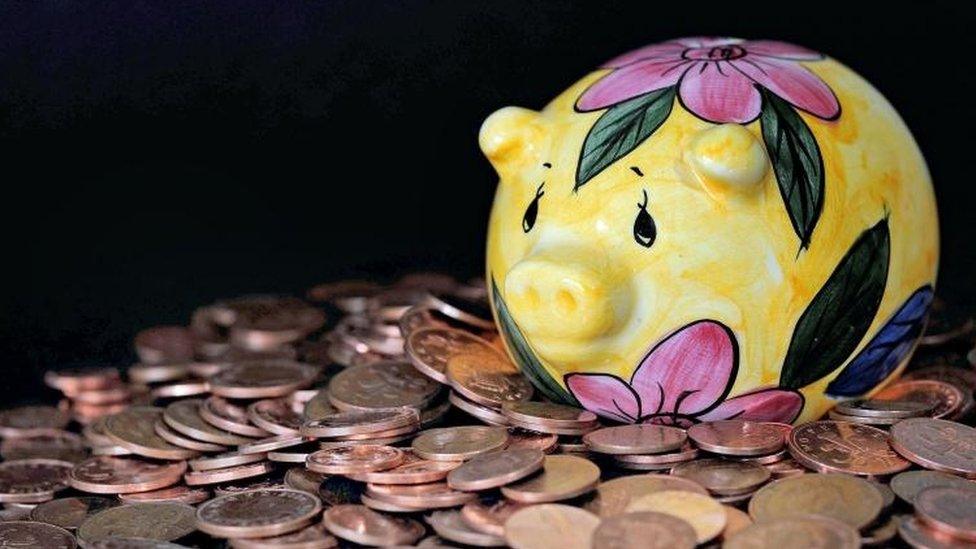Borrowing more likely than saving in UK
- Published

For the first time since records began, UK households are more likely to be borrowers than savers, according to official figures.
Households became net borrowers last year for the first time since data began to be collected by the Office for National Statistics (ONS) in 1987.
Figures also show that savings levels are at their lowest level since 1963.
The trend illustrates the effect of budget pressures on families and low interest rates.
All eyes on the Bank
Households become net borrowers on average if the amount of debt they are building up exceeds the amount they are depositing, in bank accounts for instance.
This has been the case for five consecutive quarters, the figures show, and for 2017 as a whole.
Meanwhile, the savings ratio it at its lowest annual level since 1963.
The ONS said the amount households saved out of their disposable income fell to 4.9% last year. The statistics authority has already described the savings ratio as falling to a record low on a quarterly basis. Now the annual rate is at a record low.
Before the 2017 low of 4.9%, the previous low was 5.2% in 1971.
The squeeze on wages is one reason for this situation. Potential savers may also be delaying any deposits into savings accounts in expectation of an interest rate rise by the Bank of England later this year.
A spokeswoman for debt charity StepChange said: "Far from being a nation of savers, we're now a nation of borrowers. If we could shift that balance a bit, especially for lower income households, we could improve the financial wellbeing of many households and prevent many experiencing problem debt."
She added that research by the charity had suggested that having an accessible emergency savings fund of £1,000 within a pension could reduce the number of families at risk of problem debt by 500,000.
Growth update
Separate figures from the ONS, external confirmed that UK economic growth slowed to 0.4% in the final three months of last year, down from 0.5% in the third quarter, as household spending slowed.
However, the ONS revised up growth for 2017 as a whole to 1.8% from the previous estimate of 1.7%, although this was still the lowest annual rate since 2012.
The ONS also released figures showing the UK's current account deficit, external with the rest of the world narrowed to £82.9bn, or 4.1% of gross domestic product, in 2017 - the smallest gap since 2011.
In the final three months of 2017, the current account deficit shrank to £18.4bn, down from £19.2bn in the previous quarter.
- Published2 August 2018

- Published19 February 2018
